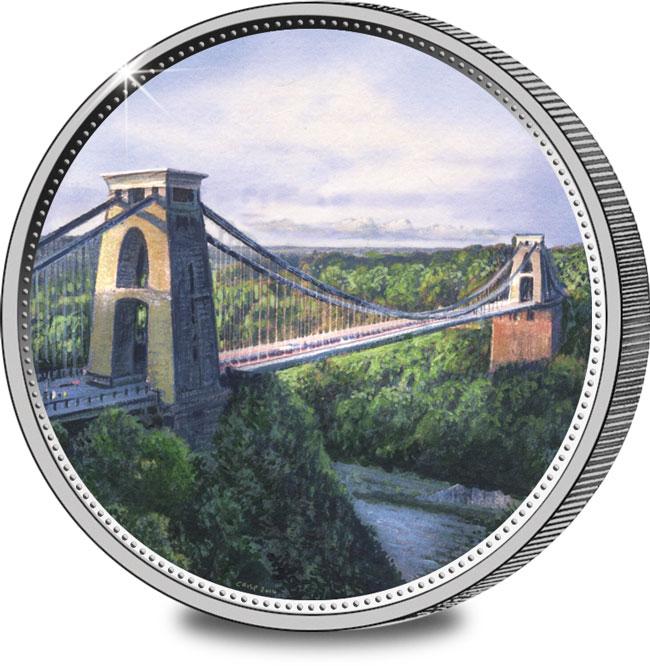-no-button.jpg)
 |
Location: Over Avon Gorge between Clifton and Leigh
Wood
Date completed: 1864
Designer/builder: Isambard Kingdom Brunel
Function: Transit for car, cycle and foot traffic over
River Avon
|
The Clifton Suspension Bridge is a breathtaking sight, boldly
spanning a vertiginous gorge. At first sight the viewer is tempted
to ask, "Why build it there, with all the obvious difficulties?"
The Bridge carries the B3129 across the Avon Gorge, through which
the River Avon runs, linking Clifton in Bristol and Leigh Woods in
North Somerset. The 13th Century stone-built Bristol Bridge over
the Avon, like old London Bridge, carried houses and shops to a
height of five stories. By the 18th century the narrow bridge
couldn't cope with the increased traffic. A replacement was
proposed but the Admiralty insisted it should have a clearance of
100 ft (30 m) to allow the passage of tall sailing ships. On low
ground this would have involved building huge embankments and
towers so the Avon Gorge at its narrowest point, which offered
ample clearance, was chosen as the site. In 1829 a competition was
held for the design of a bridge across the Gorge. Isambard Kingdom
Brunel submitted four designs, but after much tooing and froing,
the contract was awarded to Thomas Telford. Brunel managed to get
the decision overturned and was awarded the contract for a single
span suspension bridge. Brunel's father, Sir Marc Isambard Brunel,
advised Isambard to add a central support, but he ignored the
advice. Work on the bridge started in 1831 but stopped almost
immediately, due to riots and lack of investment. Work started
again in 1836 and the towers at either side were built, with a
1,000 ft (300 m) 1¼ in iron bar passed between them to carry
materials before work stopped again. In 1859 Brunel died without
seeing his Bridge completed. The institution of Civil Engineers
felt that completion of the bridge would be a fitting memorial to
Brunel's engineering achievements and began to raise funds and
campaign for work to restart. Work on the bridge started again in
1862 to a slightly modified design, with the deck heightened,
widened and strengthened. In 1864 the Clifton Suspension Bridge was
completed and officially opened to traffic. Today it is a Grade 1
listed building, maintained by a charitable trust and used by four
million vehicles a year.